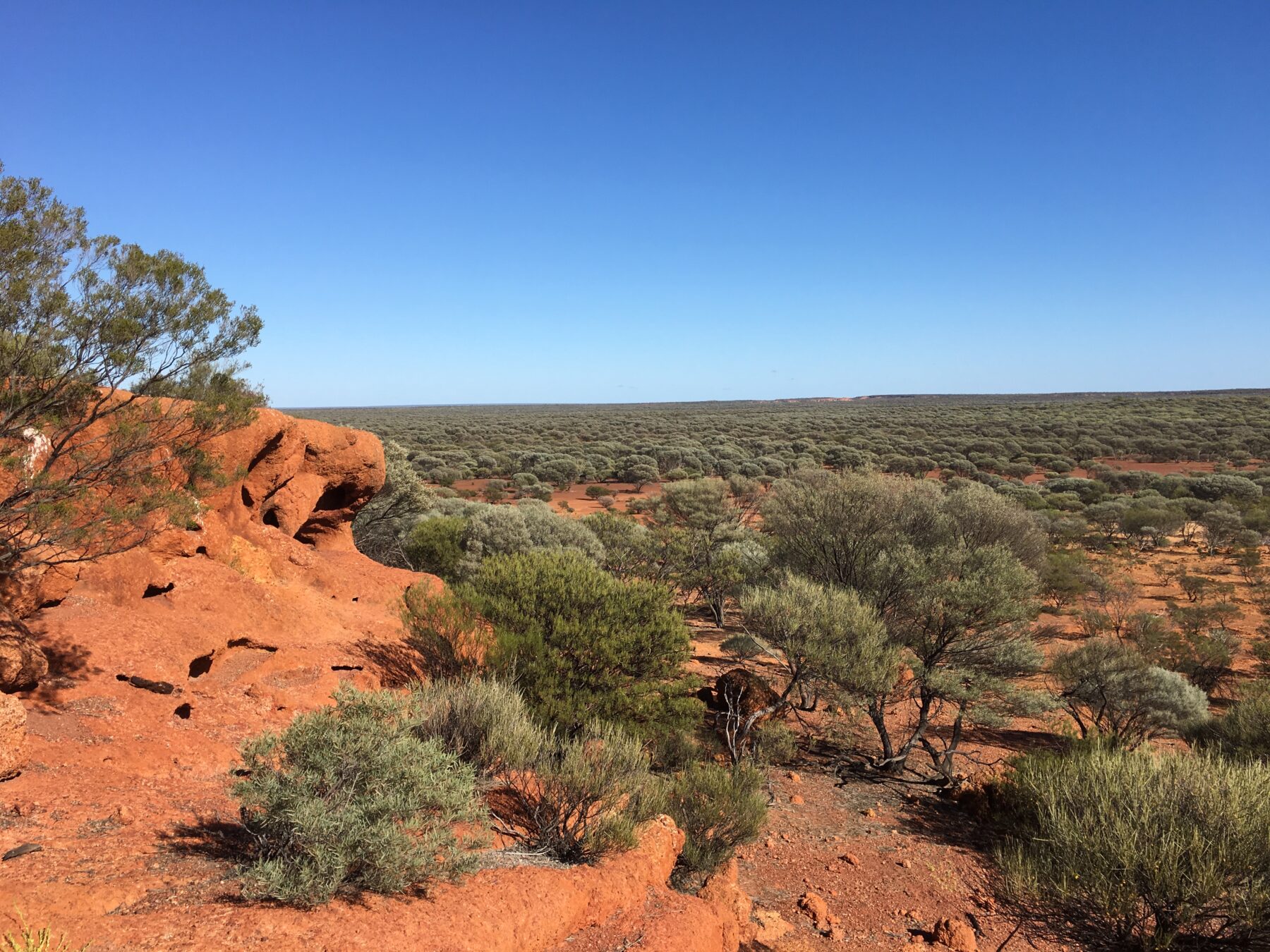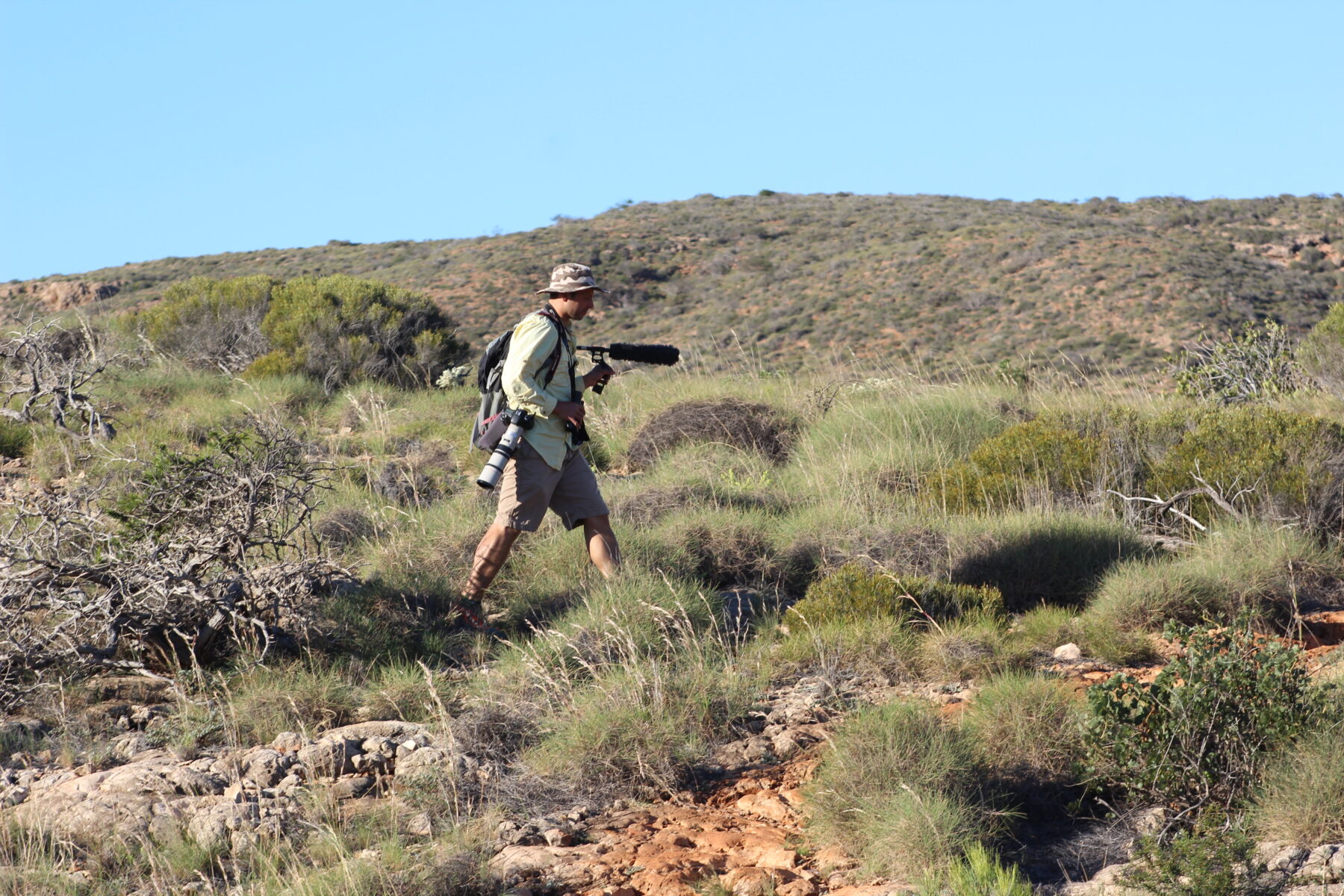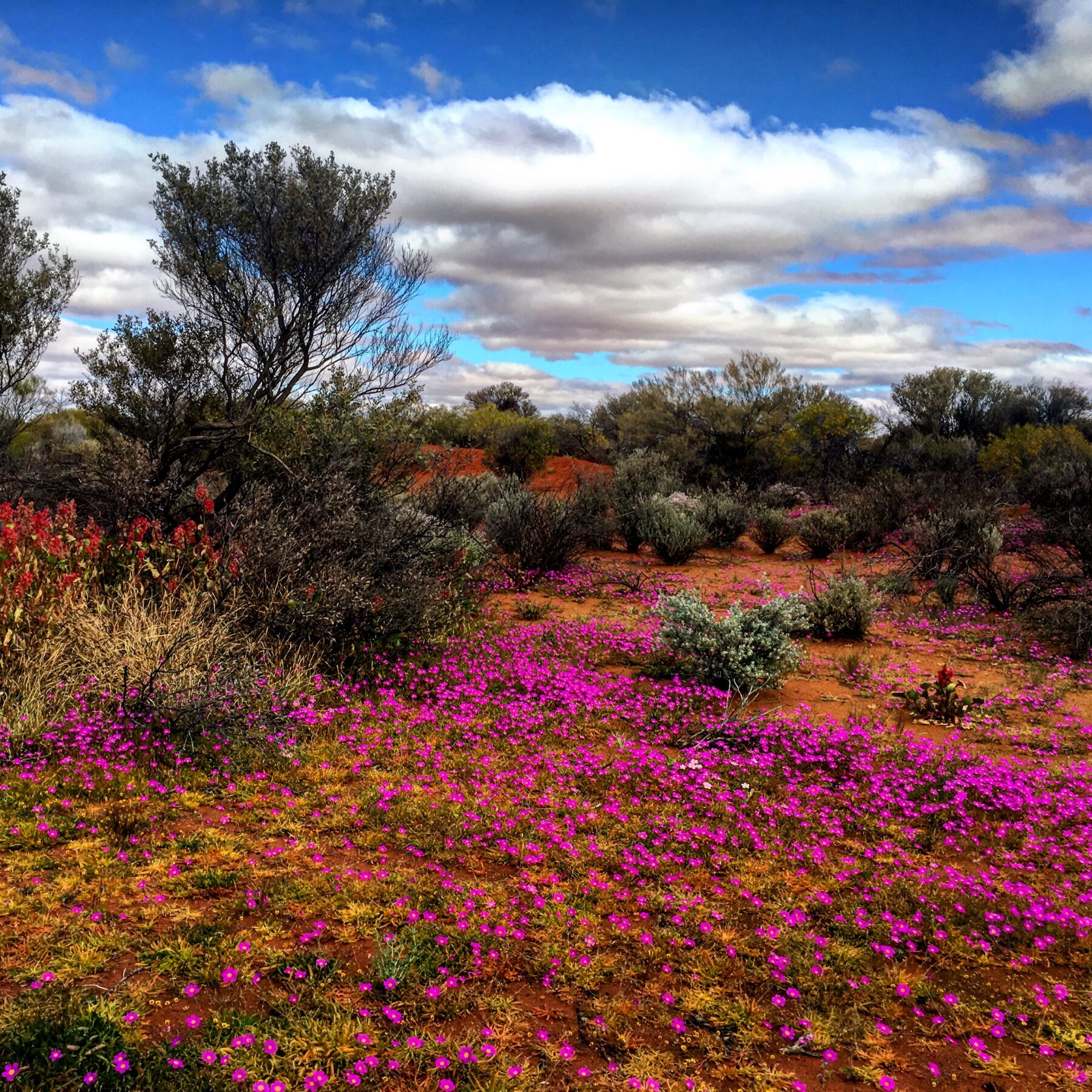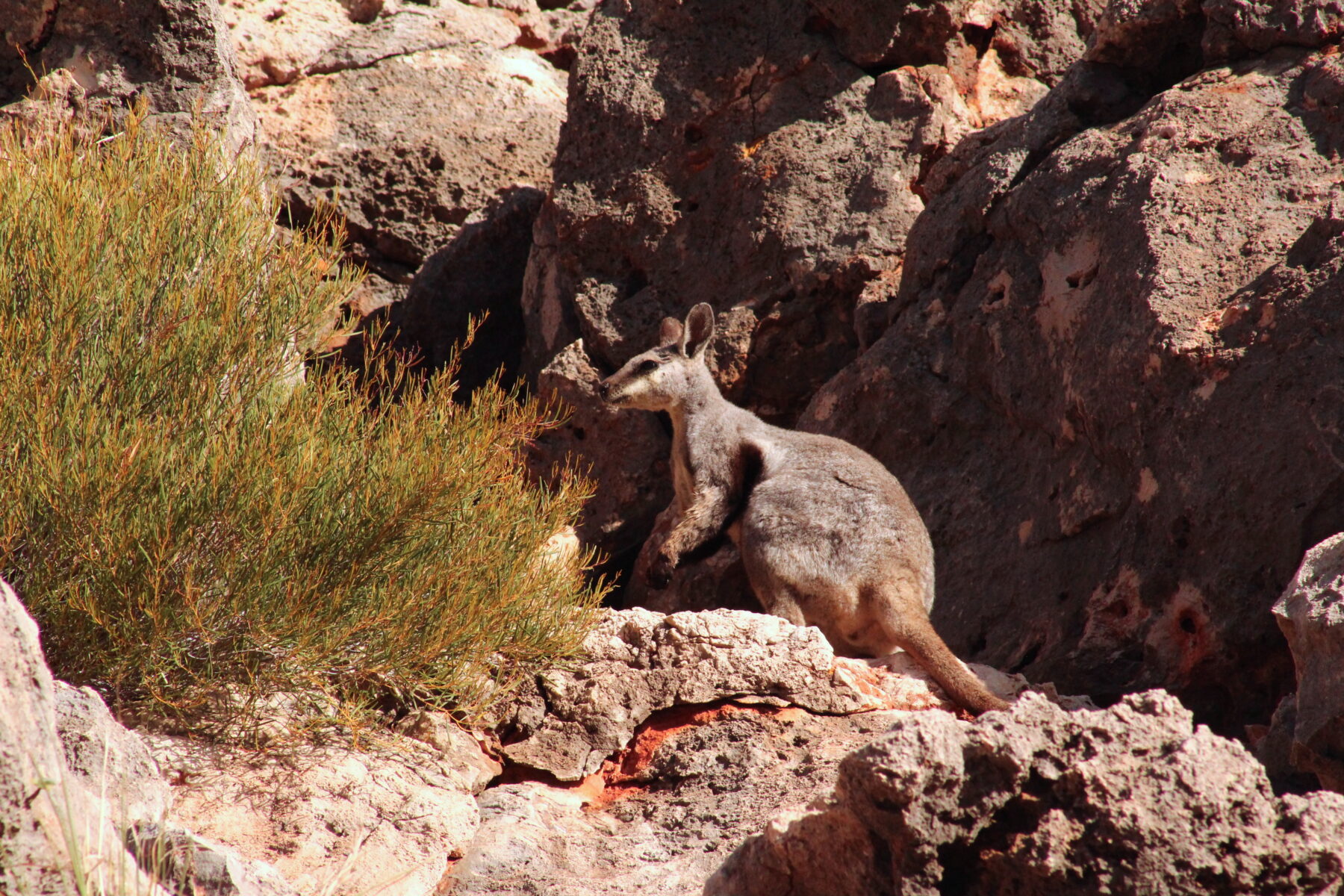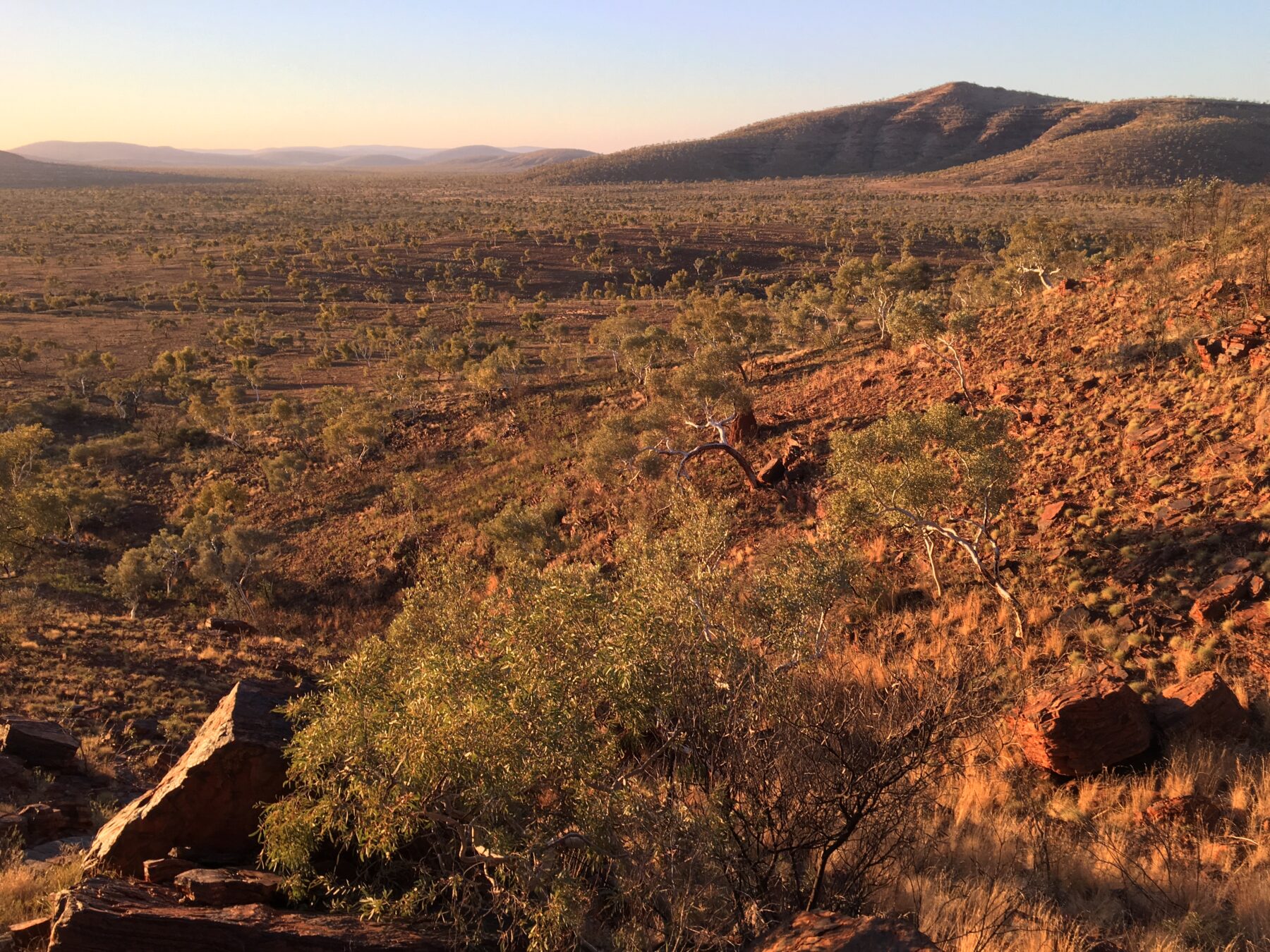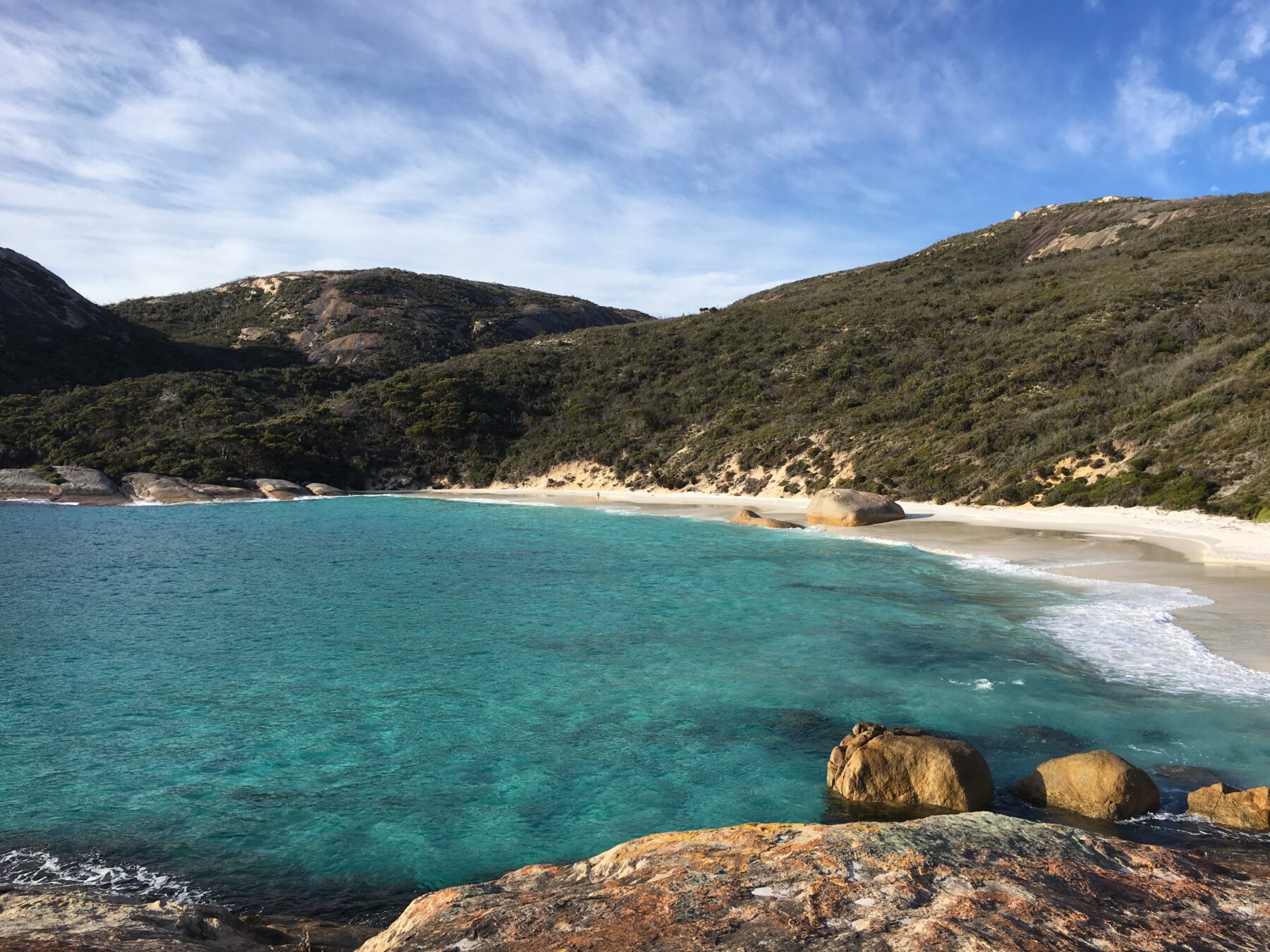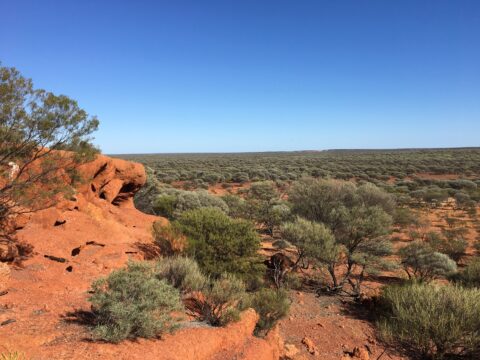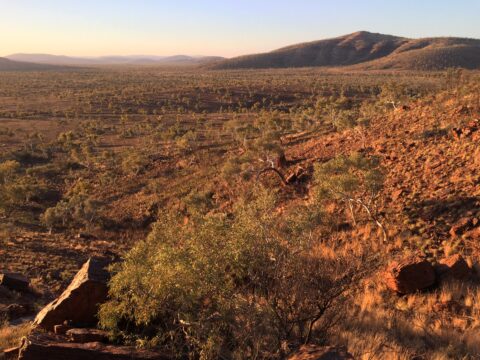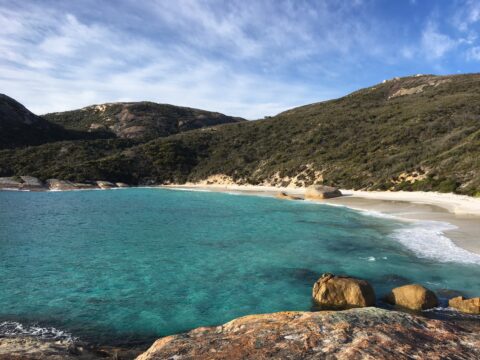Dawn found us in the midst of a deafening chorus of birdsong in the Australian bush. As we discussed our plan for the morning, hordes of hungry honeyeaters were already at work fighting for the sweet nectar of nearby flowers. As we set off on our separate ways through the red earth, low shrubs, and wildflowers—fresh and green after recent rain—I heard an unfamiliar song far off in the distance. Intrigued by the sound, I made a couple of poor-quality distant recordings just in case the bird flew farther away before I could get closer. I began sneaking towards the bird to try to identify the unknown songster. As I neared, the bird “caught wind” of me, but instead of flying away, it flew closer to investigate. I scrambled to turn the sensitivity down on my recorder, just as it started singing its heart out a few feet away from me! A White-winged Triller treated me with an up-close and personal concert and an experience I will never forget.
I was in the land Down Under co-leading a student expedition with Tayler Brooks to bring back recordings missing from the Macaulay Library. Western Australian birds were poorly represented in the Macaulay Library, so we set out to improve the breadth and depth of the collection in the region. But the expedition wasn’t just about filling holes in the archive, it was equally about providing on-the-ground training to undergraduates.
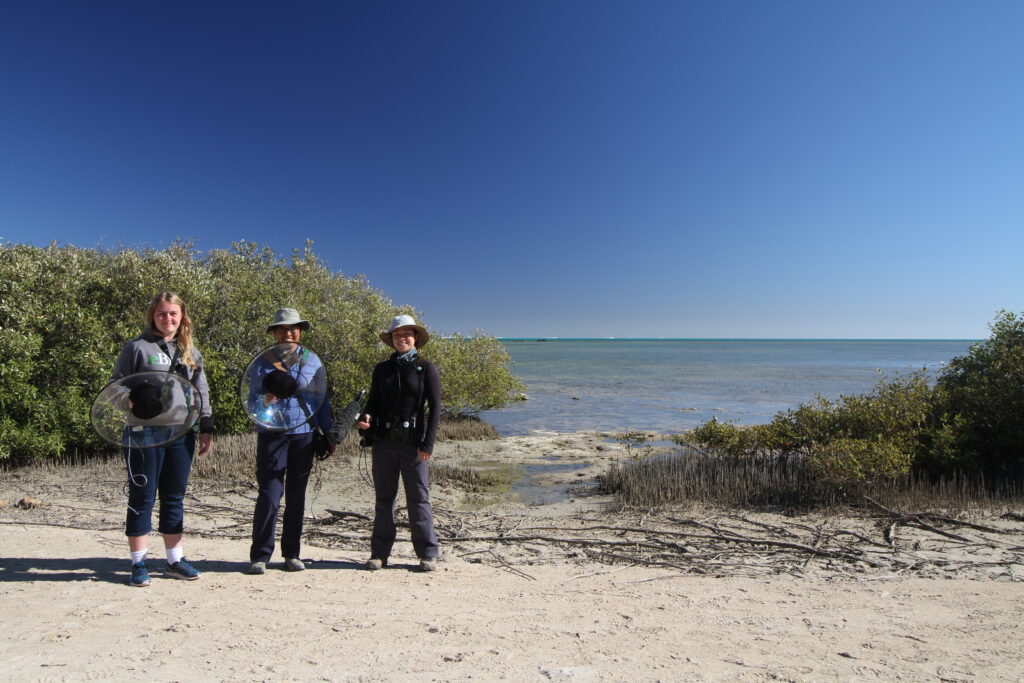
The team consisted of two ornithologists from the Macaulay Library, Eliot Miller and Tayler Brooks, and two undergraduate students, Marie Chappell and Mariel Ortega (both previous participants in the Cornell Lab’s Young Birders event).
To plan the expedition, the team studied the Macaulay Library targets list and carefully re-sorted and prioritized species to target until we’d identified a list of possible species we might encounter in Western Australia. Then we mapped out our route, being careful to plan refueling sites and ensure the safety of the team.
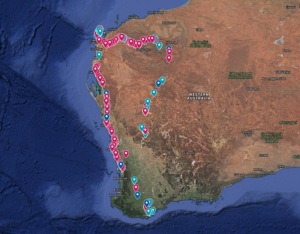
We started in Perth, where we spent half a day recalibrating our circadian rhythms. We’d already been practicing as a team with the recording equipment, so after our pineal gland recalibrated, we were ready to hit the ground running. We began by driving north up the coast from Perth, targeting some of the poorly represented species that can readily be found in the heathlands.
Tayler brought years of recording experience to the table, instructing on the finer points of recording birds. The rest of us practiced precisely aiming a parabolic microphone to maximize signal to noise ratio and making scientifically valuable voice announcements to complement each recording. Mariel and Marie quickly picked up the techniques and refined their skills over the next two weeks. They learned valuable field skills as well as how to plan for the unexpected.
“Australia has a way of working its magic if you’re willing to chase down its treasures.” — Marie Chappell, Cornell ‘21
We devised a fairly ambitious route to maximize our exposure to our target list, but we also anticipated needing to adapt to on-the-ground conditions. Sure enough, we found ourselves needing to make a major course correction halfway through the expedition. The team had been eager to get to the Cape Range and Pilbara regions, known for small populations of endemic and poorly known species and subspecies. One of the rock-wallabies we bumped into, for example, turned out to be the first record of its kind in iNaturalist (https://www.inaturalist.org/observations/33763027). But severe drought was still rearing its head in both areas and few birds were singing. Disappointed, but still jazzed over the recordings we had obtained on some of our first days in the ephemeral wet areas in the mulga north of Perth (see: https://ebird.org/checklist/S59392020, https://ebird.org/checklist/S59096219, and https://ebird.org/checklist/S59269470), we returned via the inland route, making quick progress back towards the region that had received rain.
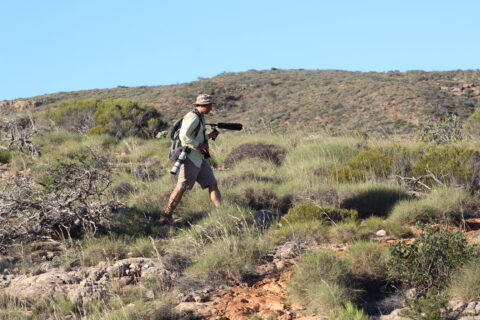
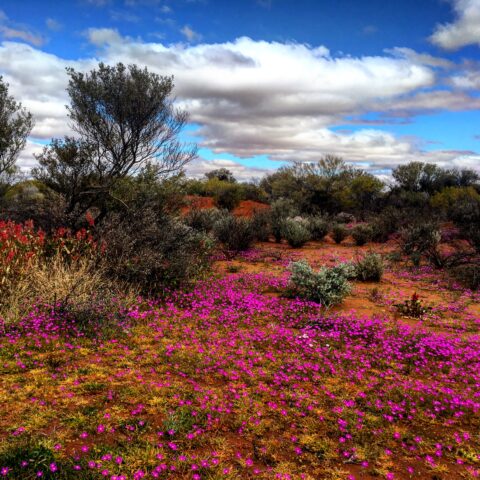
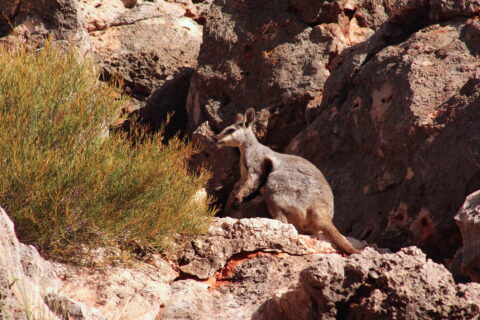
Changing gears and heading back south paid off with excellent recording opportunities including the aforementioned White-winged Triller, a Red-capped Robin recorded by Marie Chappell, a Black Honeyeater recorded by Mariel Ortega, and a Pied Honeyeater recoded by Tayler Brooks.
The team came back with recordings for 15 species that were completely new for the archive, with an additional 58 that had fewer than 10 recordings in the collection before the expedition. We recorded more than 100 species and photographed more than 50 species by the end of our journey, and most importantly, returned with two newly minted professional recordists: Marie Chappell and Mariel Ortega. We anticipate that this will be the first in a long history of undergraduate-led Macaulay Library multimedia target expeditions.
Within weeks of our return, the Cornell Lab of Ornithology released Merlin Bird ID for all of mainland Australia, featuring many of the recordings we brought home. Merlin now covers 4,000 of the world’s birds, is available in more than 12 languages, and is completely free.



